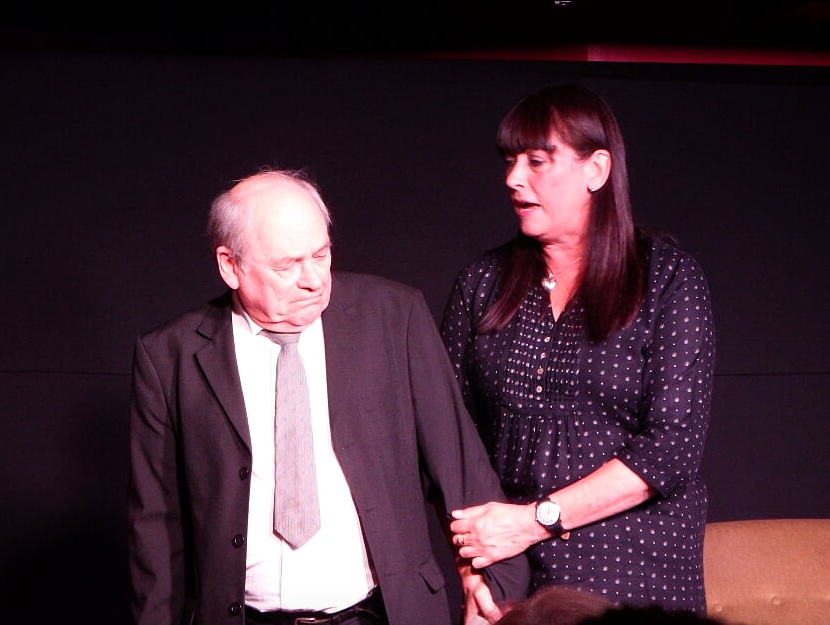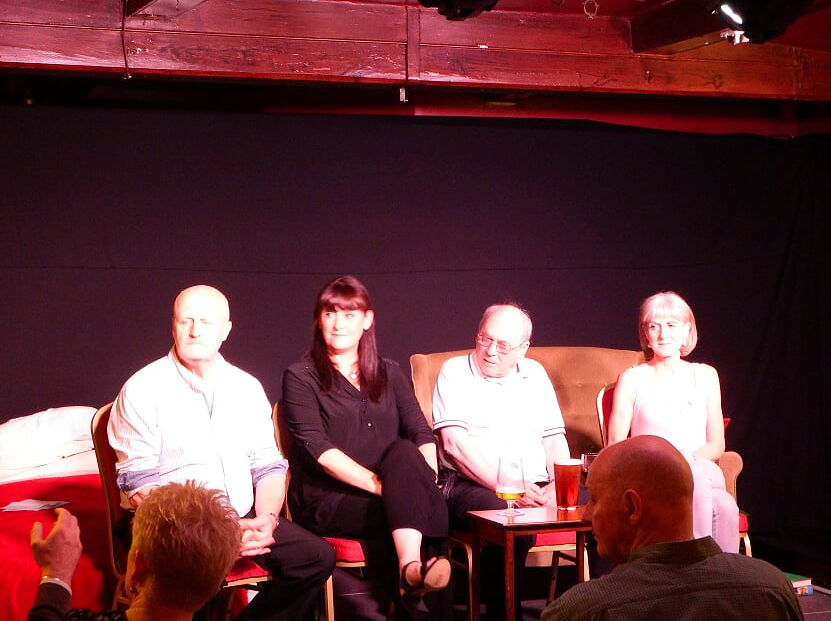AS part of the 2016 Greater Manchester Fringe Festival, Quays News reporter Andrew Riley went to the Swan on Tuesday (July 5) to take in ‘The Last Memory’…
Rarely can a piece of art reduce an audience to both laughter and tears.
“The Last Memory” by Alan Stockdill is one of those rare gems.
Tracing the attempt by a father (Ernest, played by Keith Royston) and daughter (Lynne, played by Catherine Pasek) to preserve his memories, the play touches on a number of themes: faith, love and the pressures of watching your parent slowly change before your eyes.
This is a very moving and beautiful piece of theatre.
The raw emotion that the two bring to the small stage at The Swan infuses itself into those watching, as we take the journey into Ernest’s dementia and his attempt to preserve that “Last memory” on video so his daughter can remember the real him and not the man he has become.
After he received his diagnosis, the audience hear how he had to deal with watching his own mother as she became a prisoner in her own mind and forgot who he was.
He tells Lynne that she is to look for the joy in his eyes and if she can’t see it, she is to watch the memory.
The play takes its inspiration from the experiences of both its author, Stockdill, and his leading lady, Pasek.
Both the actors portraying these parts bring them to life with such passion and belief that it is impossible not to become emotionally invested in in how they cope.
A very sparse set allowed the players to really connect with the audience in this most intimate of venues. There were people (including myself) who were in tears during this production.
Conversely, there are some stand out parts that really make you stop and laugh with them as well.
When Ernest begins to record his memory, he takes the audience on a journey of love, life and his worry that he won’t remember his daughter.
As his condition worsens, Lynne struggles to see the joy in her father’s eyes, yet she realises that their roles are not reversed, but that Ernest is still her dad, and she is still his daughter.
After the show, there was a Q and A with the artists and the director, all of whom shared their experiences with those of the audience who opted to stay behind.
Hearing other people share their experiences of this illness, it was impossible not to be moved by just how this disease affects so many people in very different ways, and just how important it is that works like this are shown to as broad an audience as possible.
By Andrew Riley
@QuaysRL
















Recent Comments